 Bomber Command
Bomber Command  |
Aircrew Chronicles
|
Aircrew Losses
|
Nose Art
|
BCATP
|
Lancaster
|
Media
|
Aircrew Chronicles
|
Aircrew Losses
|
Nose Art
|
BCATP
|
Lancaster
|
Media
 Bomber Command
Bomber Command  |
Aircrew Chronicles
|
Aircrew Losses
|
Nose Art
|
BCATP
|
Lancaster
|
Media
|
Aircrew Chronicles
|
Aircrew Losses
|
Nose Art
|
BCATP
|
Lancaster
|
Media
Bomber Command
First used in March 1942, GEE utilized widely spaced, ground-based transmitters that each generated a series of sequential radio pulses to create a grid which corresponded to maps carried within the aircraft. The transmissions were 'line of sight' so the curvature of the earth limited its reliable use to about 350 miles. GEE also assisted navigators returning from a raid, as they attempted to locate their base in cloud and fog. GEE was 'passive', requiring only a receiver. There were no transmissions to give the bomber's presence away. |
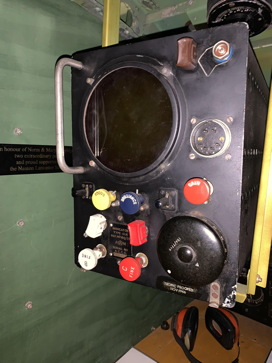
|
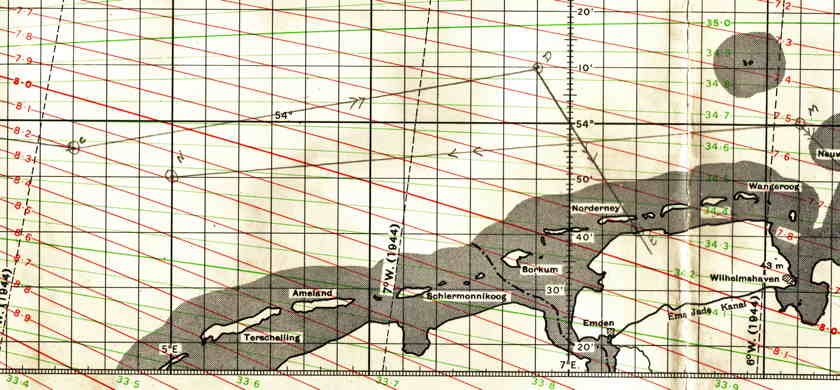
|
During January 1943, a downward-looking radar system named H2S became available. There were no range limitations because both the transmitting and receiving devices were carried in the aircraft. H2S signals were emitted from a rotating transmitter located below the rear fuselage. The reflections were displayed on a screen, displaying a 'picture' of the terrain below even at night and through cloud cover. The contrast between water and land was very distinct and it was often possible to distinguish between built up areas (cities) and countryside. However, H2S transmissions could be detected by enemy fighters, enabling them to hone in on individual aircraft. 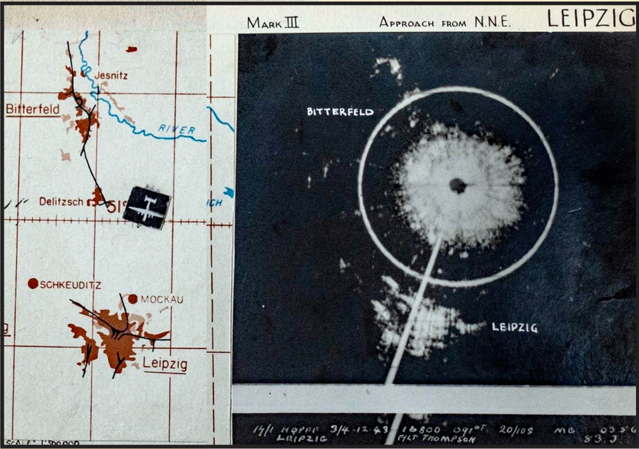
|
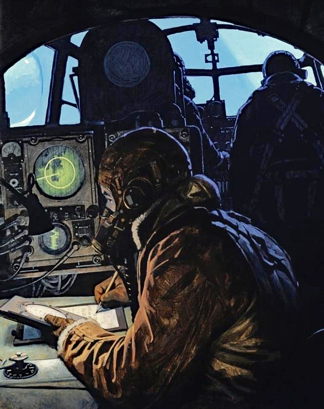 with an H2S set to his right. The map (at left) shows the bomber approaching Leipzig. The image on the H2S screen (at right) shows what the navigator in the bomber would see. |
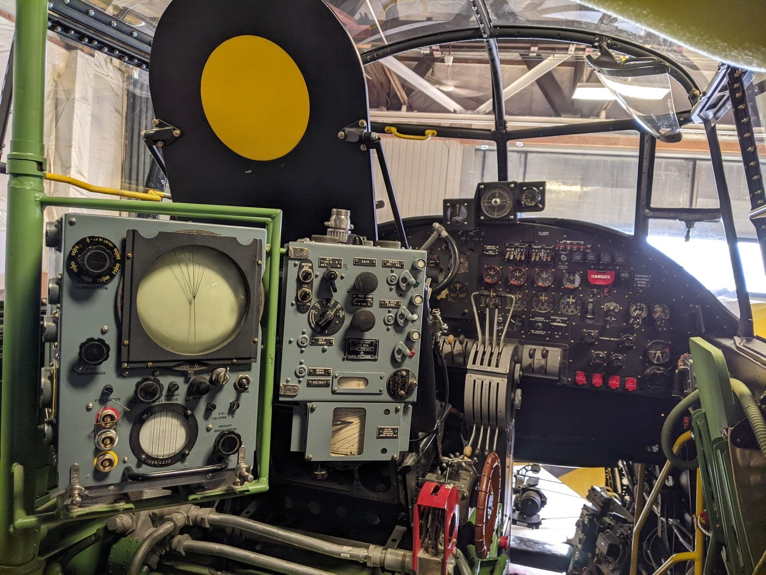
WINDOW was the most successful technique devised to jam enemy radar systems. It involved large volumes of small strips of metal foil, cut to a specific length. This disbursed from bundles that were dropped at designated locations along the route to the target, producing a confused response to enemy radar pulses. WINDOW was first used on a highly successful attack on Hamburg during July 1943.
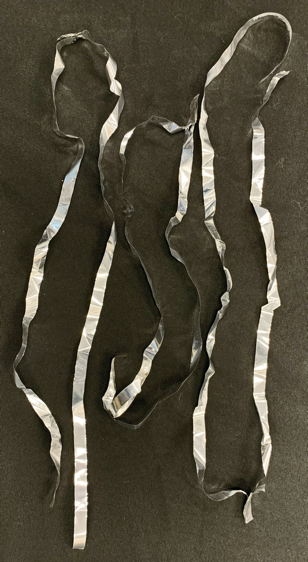 |
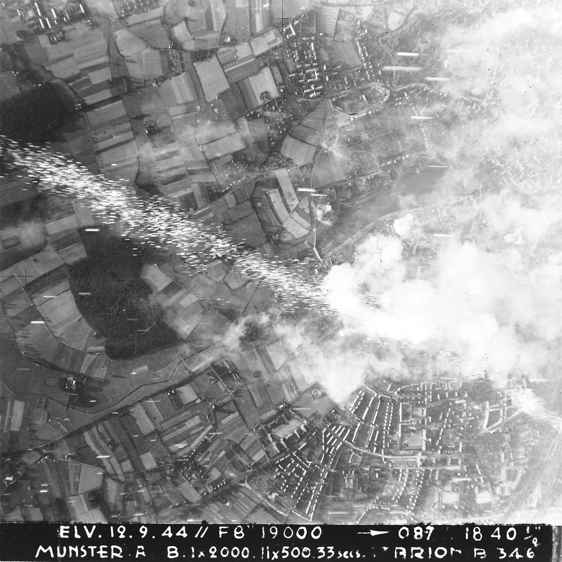 |
Utilized by the Pathfinder Force, OBOE became operational in 1943. It utilized two ground-based radar stations to guide a single bomber (generally a Pathfinder Force Mosquito at high altitude) to its target.
OBOE was very accurate, but like GEE, limited in range.
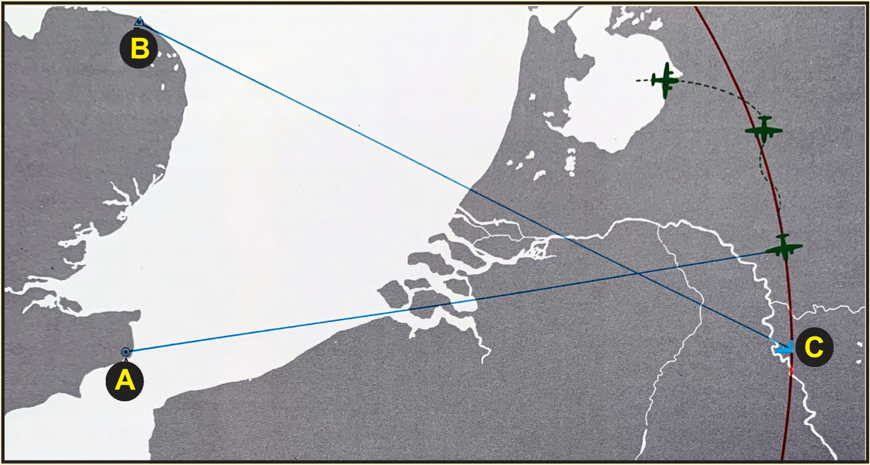
As H2S was implemented, the operators noticed that sometimes fleeting echoes were visible and concluded that these were from other aircraft.
FISHPOND was then developed to work in conjunction with the H2S downward-looking radar to detect enemy fighters that normally approached from below the bomber, generally unseen due to the lack of a mid-under turret on almost all Bomber Command aircraft.
Introduced during the spring of 1942, MONICA was a radar system that alerted bomber crews to fighters approaching from behind. Unfortunately, the enemy quickly developed a passive radar receiver which was used to hone in on bombers using Monica.
During July 1944, a Luftwaffe fighter mistakenly landed at an RAF station. After examination of the radar systems on board, Monica was removed from all Bomber Command aircraft.